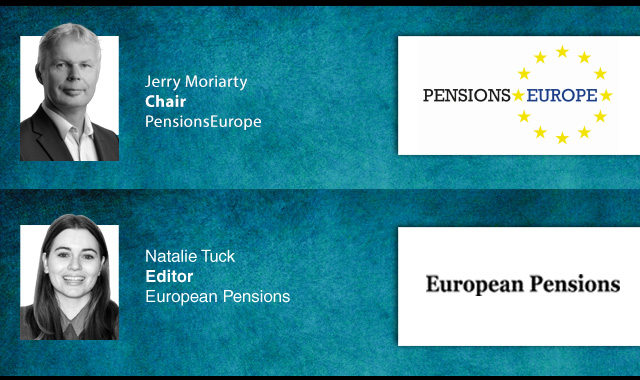Charlotte Moore finds that a range of factors are contributing to greater alignment of European pension systems, but there is a long way to go before the EU achieves a truly region-wide solution
This could be the year that Europe takes significant steps towards the development of a region-wide pensions industry. That revolutionary development has not been driven by a European Union directive, but a confluence of different factors pushing the entire region towards the same solution – an intelligent defined contribution system.
It’s something of an understatement to describe the pensions industry in Europe as lacking homogeneity. There are huge differences in approach towards retirement provision, which are further complicated not only by different political attitudes and regulatory frameworks but also by very different financial service structures.
As a very rough rule of thumb, a line can be drawn between the North and the South. Northern European countries, such as the UK and the Netherlands, have a long tradition of providing pension provision through defined benefit pension schemes.
In Southern Europe, however, private pension provision is much less widespread, with much of the population traditionally relying on social security payments.
Schroders head of pan-European institutional distribution Miles O’Connor says: “Despite the very different approach taken by different countries, there are some important trends that are accelerating the move towards DC pensions across Europe.”
One of these is the transfer of risk away from corporates and governments towards individuals. “While there is considerable variation between each country, there is a fundamental drive by governments and corporates to make sure that individuals take greater responsibility for their retirement income,” says O’Connor.
In the North, the adoption of mark to market accounting has shone a spotlight on the cost of a DB scheme. Robeco head of European pensions Jacqueline Lommen says: “The introduction of IFRS accounting rules has made pensions a boardroom issue with a much closer focus on whether the costs of a pension scheme are sustainable.”
In the South, the sovereign debt crisis has spurred governments into action. O’Connor says: “Spain has had to bite the bullet and cut state pensions. They are now trying to fight a rear guard action and get corporates and individuals to make up the gap.”
With the adoption of DC across Europe well underway, the debate can now move on to more strategic matters. Mercer senior associate Anne Bennett says: “Across Europe, countries are now moving to the second phase of defined contribution, focusing on how well DC is working and ensuring that regulation and governance provide the best outcomes.”
Individual European governments are paying close attention to DC schemes.
“It is in governments’ best interest to ensure that DC schemes will have good outcomes to ensure that there is not more trouble created a few years down the line,” Bennett says.
In the UK, for example, the government is focusing on the fee structure of auto-enrolment pensions. “Even in Denmark, which is considered to have some of the best pension provision, the government recently said there was more need for transparency,” adds Bennett.
The European Commission is also interested in this issue. Bennett says: “The European Insurance and Occupational Pension Authority will now focus on the so-called pillar three for the three-pronged approach of the EIOPA review. That means EIOPA will report back on governance, reporting and transparency with a lot of focus on defined contribution.”
Lommen says: “EIOPA is looking at how to protect members in individual schemes as well as the ideal characteristics of a DC scheme, including the lifecycle part of DC schemes.”
While the European Commission cannot force countries to switch to DC, it can provide the appropriate solvency requirements and create European passports so best practice can be shared across countries. That can make it easier for the pension products to be rolled out across different countries, adds Lommen.
In countries like the Netherlands and the UK where there is a long tradition of defined benefit pensions, many of the techniques are now being transferred across to DC. Lommen says: “In the Netherlands, the DB brains have been developing the best form of DC scheme.”
That includes looking at the right kind of investment strategy to ensure that a member’s pension pot can achieve relatively consistent growth and ensure the value of these assets are protected in the final years before they retire.
“One of the biggest focuses of the current discussions is about how quickly should a pension pot should be de-risked,” says Lommen.
Part of that discussion involves the development of third generation DC default fund solutions that involves two funds. One is more biased towards higher returns while the second is designed to mitigate against market, inflation and interest-convergence risk. This resembles the DB concept of growth and matching assets, adds Lommen.
Lommen argues that the benefit of this two fund approach is that it reduces costs because of the issue of legacy inherent in target-date funds.
“Each time there is a new generation, you have to build a new fund of funds, which costs money. The use of two funds makes it much easier to tailor to individual requirements by rebalancing allocations between these two funds,” adds Lommen.
In the UK, the discussion about the direction that DC default funds should be developed is at a different stage with much of the focus on the benefits of mechanistic life cycling versus target-date funds. There is also a close focus on ensuring members get access to the best annuity products.
While the design of new generation DC default funds is at a sophisticated level in the UK and the Netherlands, that is not the case throughout all of Europe. However, those countries that lack that level of expertise are equally interested in these types of solutions.
Lommen says: “There is a lot of interest in these types of solutions from other parts of Europe, especially Southern and Eastern Europe, even though these regions have had DC for a long-time, it’s been a very smart and simple approach.”
The combination of multiple factors driving different European countries towards the adoption of a more sophisticated DC solution as well as a much more open attitude towards taking on different ideas promises the possibility of a pan-European solution.
ING Management strategic adviser Tjitsger Hulshoff says: “From an investment perspective it makes absolute sense to have a pan-European pension approach.
A similar solution is needed in every country to generate returns and to protect the value of the pension pot in the years leading up to retirement.”
But there is one major problem preventing this from taking place. “The elephant in the room is fiscal treatment,” Hulshoff says. “The provider of the pension needs to know the tax regime of the country where the product is being exported to and how the pension will be treated in that jurisdiction. This will slow down the process.”
However, there could be another way around this problem. Hulshoff says: “In the Netherlands, there is a lot of interest in Institutions for Occupational Retirement Provisions.”
IORPs are an easy way to pool assets and administration solutions. It doesn’t get round the problems of fiscal treatment in the local market but it can help you to save a lot of costs and increase your international labour mobility, adds Hulshoff.
“To date these institutions have not been very successful but I think that could change in 2014.”
While it might be unclear if IORP will be the way to develop a pan-European pension solution, such a development would be very welcome. Bennett says: “There is a lot of appetite among our larger international clients for a pan-European pension solution. It would simplify their HR functions and help them to cut costs.”
It remains to be seen, however, if the current confluence of political will, corporate appetite and interest from fund managers will coalesce and form enough force to overcome the significant regional variations to make 2014 the year that a pan-European DC solution comes close to becoming reality.
Written by Charlotte Moore, a freelance journalist
Latest News
-
IMF tells Croatia to limit early retirement options
-
Norway’s parliament votes to suspend ethical guidelines for GPFG
-
FRR injects €100m to boost struggling French small and mid-caps
-
News in brief: 7 November 2025
-
£550bn of buy-ins expected over next decade as insurers step up
-
AAE makes case for actuaries’ involvement in AI governance
Podcast: Stepping up to the challenge

In the latest European Pensions podcast, Natalie Tuck talks to PensionsEurope chair, Jerry Moriarty, about his new role and the European pension policy agenda
Podcast: The benefits of private equity in pension fund portfolios

The outbreak of the Covid-19 pandemic, in which stock markets have seen increased volatility, combined with global low interest rates has led to alternative asset classes rising in popularity. Private equity is one of the top runners in this category, and for good reason.
In this podcast, Munich Private Equity Partners Managing Director, Christopher Bär, chats to European Pensions Editor, Natalie Tuck, about the benefits private equity investments can bring to pension fund portfolios and the best approach to take.
In this podcast, Munich Private Equity Partners Managing Director, Christopher Bär, chats to European Pensions Editor, Natalie Tuck, about the benefits private equity investments can bring to pension fund portfolios and the best approach to take.
Mitigating risk
BNP Paribas Asset Management’s head of pension solutions, Julien Halfon, discusses equity hedging with Laura Blows
© 2019 Perspective Publishing Privacy & Cookies







Recent Stories